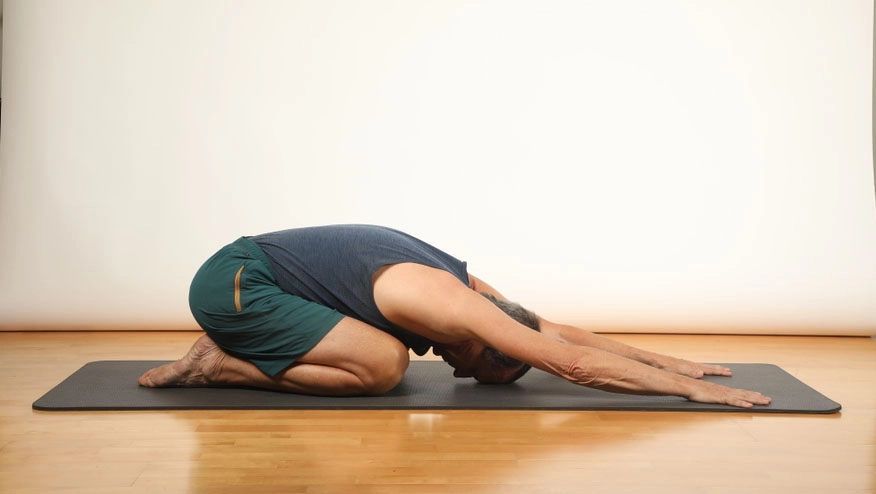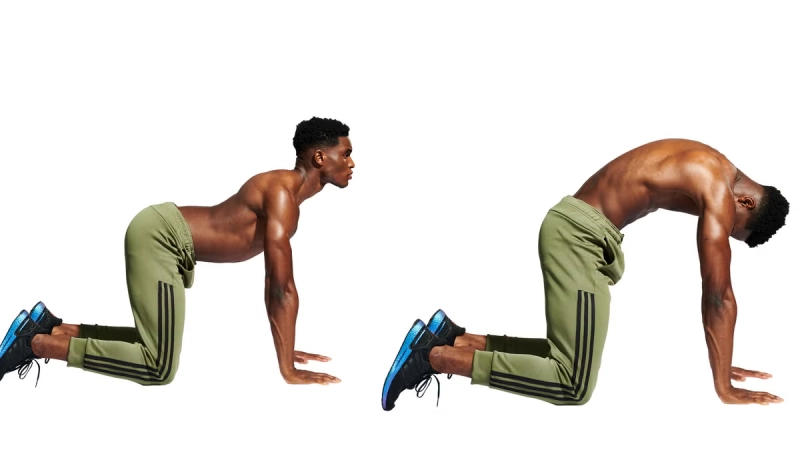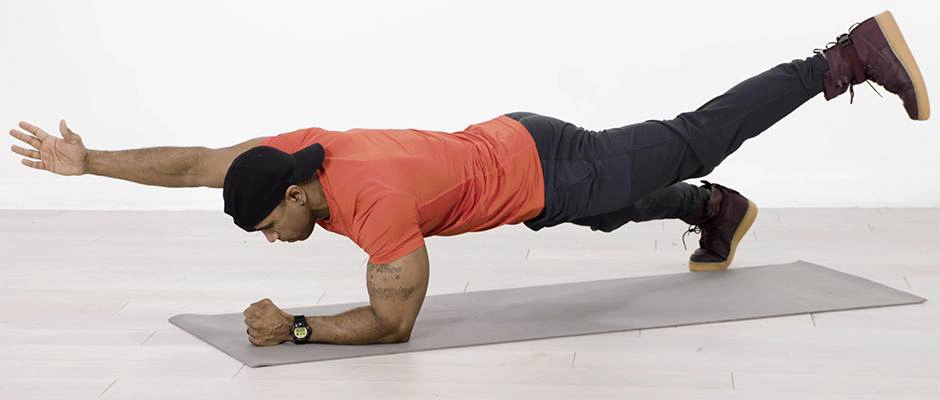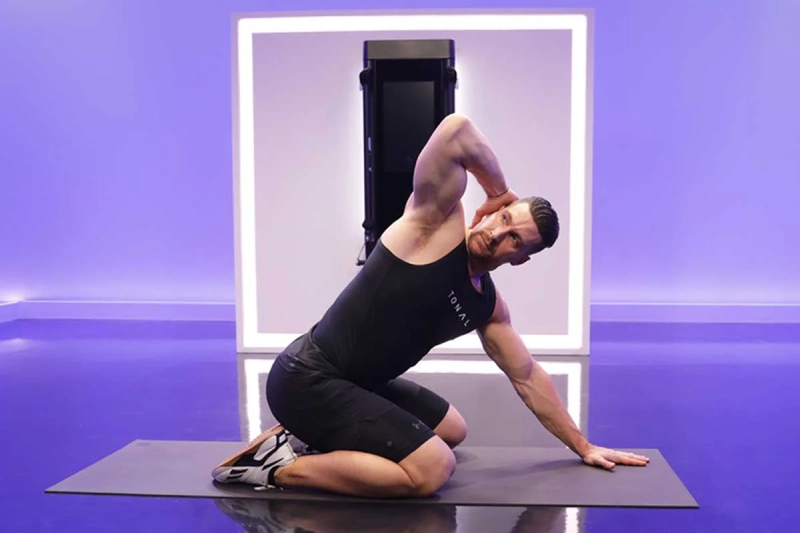Poor posture is a common problem that affects many people in today’s digital world. Whether you’re hunched over a computer all day or constantly looking down at your phone, these habits can lead to rounded shoulders, a forward head, and an achy back. Improving your posture isn’t just about looking more confident-it’s essential for your overall health and well-being. The good news is that with a few simple exercises, you can strengthen the muscles that support good alignment and help reverse the effects of poor posture habits.
In this article, we’ll explore five effective exercises that can help improve your posture over time. These exercises focus on strengthening your core, opening your chest, and aligning your spine properly. By incorporating these movements into your regular routine, you can experience less pain, improved breathing, and better spinal health.
Understanding the Importance of Good Posture
Good posture is more than just standing up straight. It involves training your body to stand, walk, sit, and lie in positions that place the least strain on supporting muscles and ligaments during movement and weight-bearing activities. When you maintain proper posture, your bones and joints are correctly aligned, which helps decrease abnormal wearing of joint surfaces that could result in arthritis and joint pain.
Proper posture also helps reduce the stress on the ligaments holding the spinal joints together, minimizing the likelihood of injury. When your posture is aligned, your muscles work more efficiently, using less energy and preventing muscle fatigue. This efficiency can help prevent muscle strain, overuse disorders, and even back and muscular pain.
Beyond the physical benefits, good posture can also affect your mental state. Research suggests that standing or sitting upright can improve body-related emotions like body image satisfaction and self-appraisal. People with good posture often appear more confident and may actually feel more self-assured as a result.
Poor posture, on the other hand, can lead to a variety of health issues. When you slouch or hunch over, you compress your internal organs, which can affect digestion and breathing. Over time, poor posture can lead to chronic back pain, neck strain, and even headaches. It can also contribute to decreased flexibility and increased risk of injury during physical activities.
Fortunately, posture can be improved through consistent practice and targeted exercises. The five exercises we’ll discuss are specifically designed to strengthen the muscles that support good posture, increase flexibility in areas that tend to be tight, and help retrain your body to maintain proper alignment naturally.
Exercise 1: Child’s Pose for Spinal Alignment

Child’s Pose is a gentle yoga position that helps elongate and stretch the spine while relieving tension in the lower back and shoulders. This restorative pose is perfect for beginners and can be modified to suit different flexibility levels. It’s an excellent way to start your posture improvement routine because it helps you become aware of your spinal alignment in a relaxed position.
To perform Child’s Pose correctly, start by kneeling on the floor with your big toes touching and your knees about hip-width apart. As you exhale, lower your torso between your thighs and extend your arms forward with palms facing down. Allow your forehead to rest gently on the floor or a yoga mat. If this stretch is too intense, you can place a pillow or folded blanket under your thighs for support.
While in this position, focus on breathing deeply into the back of your rib cage and waist. Each inhale creates space in your back, and each exhale allows you to sink deeper into the pose. The gentle stretching sensation you feel along your spine helps to decompress vertebrae that may have been compressed from poor posture habits like slouching or hunching over a desk.
Child’s Pose not only stretches your spine but also opens your hips and shoulders-areas that often become tight when we maintain poor posture for extended periods. By practicing this pose regularly, you can increase flexibility in these areas and create more freedom of movement in your daily activities. Try to hold this pose for up to five minutes, continuing to breathe deeply throughout.
Exercise 2: Shoulder Blade Squeeze for Upper Back Strength

The Shoulder Blade Squeeze is a simple yet powerful exercise that targets the muscles between your shoulder blades. These muscles, known as the rhomboids and middle trapezius, play a crucial role in maintaining proper posture. When these muscles are weak, your shoulders tend to round forward, creating that hunched appearance that’s so common in people who spend long hours at a desk.
To perform this exercise, you can either sit or stand with your back straight. Keep your shoulders relaxed and down, away from your ears. Gently pull your shoulder blades together as if you’re trying to hold a pencil between them. It’s important not to raise your shoulders during this movement-focus on the horizontal pulling motion rather than an upward shrug. Hold this squeeze for about 5-10 seconds, then release slowly.
The beauty of the Shoulder Blade Squeeze is that it can be done anywhere, anytime-while sitting at your desk, standing in line at the grocery store, or even while watching TV. This accessibility makes it easy to incorporate into your daily routine. Try to perform 10-15 repetitions, 2-3 times per day for the best results.
Regular practice of this exercise strengthens the upper back muscles that are responsible for pulling your shoulders back into proper alignment. As these muscles become stronger, you’ll find it easier to maintain good posture naturally. The exercise also helps counteract the forward pull that occurs when we work on computers or look down at phones, which is one of the primary causes of poor posture in modern life.
Exercise 3: Cat-Cow Stretch for Spinal Mobility

The Cat-Cow Stretch is a dynamic yoga movement that enhances the flexibility and mobility of your entire spine. This gentle flowing exercise helps to warm up the spinal column and improves awareness of how your spine moves. By practicing Cat-Cow regularly, you can increase the range of motion in your spine and develop better control over your posture throughout the day.
To begin, position yourself on your hands and knees in a tabletop position. Make sure your wrists are directly under your shoulders and your knees are under your hips. Start with a neutral spine, where your back is flat like a table. As you inhale, move into the Cow pose by dropping your belly toward the floor, lifting your chest and tailbone toward the ceiling, and looking slightly upward. This creates a gentle arch in your lower back.
Then, as you exhale, transition into the Cat pose by rounding your spine toward the ceiling, tucking your tailbone, and drawing your navel toward your spine. Allow your head to drop gently, gazing toward your thighs. The movement should be smooth and fluid, coordinated with your breath. Continue alternating between Cat and Cow for 10-15 cycles, moving at a comfortable pace that feels good for your body.
The Cat-Cow Stretch is particularly beneficial for people who spend long hours sitting, as it helps counteract the compression that occurs in the spine during prolonged periods of inactivity. This exercise not only improves spinal mobility but also strengthens the deep core muscles that support proper posture. Additionally, the rhythmic movement combined with breath awareness can have a calming effect on your nervous system, making it a great stress-reducer as well.
Exercise 4: High Plank for Core Strength

The High Plank is a fundamental exercise that builds strength in your core, shoulders, and back-all essential muscle groups for maintaining good posture. This exercise might look simple, but it’s incredibly effective at developing the endurance needed in your postural muscles to support proper alignment throughout the day. A strong core acts as a natural corset, helping to keep your spine properly positioned.
To perform a High Plank correctly, begin on all fours. Straighten your legs behind you, lifting your knees off the floor and raising your hips until your body forms a straight line from your head to your heels. Your hands should be directly beneath your shoulders with fingers spread wide for stability. Engage your abdominal muscles by drawing your navel toward your spine, and squeeze your glutes to help maintain the straight line of your body.
The key to an effective plank is proper form rather than duration. Focus on keeping your neck in a neutral position by gazing slightly ahead of your hands, not dropping your head or looking up. Your shoulders should be drawn away from your ears and your shoulder blades should be flat against your back, not winged out. Start by holding this position for 20-30 seconds and gradually work your way up to one minute as you build strength.
High Planks work multiple muscle groups simultaneously, making them an efficient exercise for improving posture. They strengthen the deep abdominal muscles that support your spine, the muscles around your shoulder blades that prevent rounding of the upper back, and the muscles in your lower back that maintain the natural curve of your lumbar spine. By practicing High Planks regularly, you’ll develop the muscular endurance needed to maintain good posture throughout your daily activities.
Exercise 5: Chest Opener Stretch for Shoulder Alignment

The Chest Opener Stretch is specifically designed to counteract the forward rounding of shoulders that occurs from activities like typing, driving, or looking down at mobile devices. This stretch targets the pectoral muscles in your chest, which often become tight and shortened with poor posture. When these muscles are tight, they pull your shoulders forward, contributing to that hunched appearance.
To perform this stretch, stand or sit with your back straight and your feet firmly planted on the ground. Bring your arms behind your back and interlace your fingers with your palms facing inward. If this is difficult, you can hold onto a small towel with both hands behind your back. Gently straighten your arms and lift them slightly, feeling the stretch across your chest and the front of your shoulders. As you do this, squeeze your shoulder blades together and lift your chest.
Hold this position for 20-30 seconds while breathing deeply. The stretch should feel good-a gentle pulling sensation across your chest and shoulders-but should not cause pain. If you feel any sharp or intense discomfort, ease off the stretch slightly. Aim to perform this stretch 2-3 times, taking short breaks between each repetition.
Regular practice of the Chest Opener Stretch can help reverse the effects of forward slouching by increasing flexibility in the chest and shoulders. This improved flexibility allows your shoulders to move back into their proper alignment more easily. The stretch also helps open up the front of your body, creating more space for your lungs to expand, which can improve your breathing capacity. Combined with strengthening exercises for your upper back, this stretch is a powerful tool for correcting rounded shoulders and improving overall posture.
Incorporating These Exercises Into Your Daily Routine
Consistency is key when it comes to improving your posture. These exercises will be most effective when performed regularly as part of your daily routine. Start by setting aside 10-15 minutes each day to practice all five exercises. Morning is often an ideal time, as it helps set the tone for maintaining good posture throughout the day, but choose a time that works best for your schedule.
Consider setting reminders on your phone or computer to prompt you to do these exercises, especially if you tend to get caught up in work or other activities. You might also pair these exercises with another daily habit, such as brushing your teeth or taking a shower, to help make them a natural part of your routine. Remember that forming new habits takes time, so be patient with yourself as you establish this practice.
It’s also beneficial to be mindful of your posture throughout the day, not just during your dedicated exercise time. Set up your workspace ergonomically to support good posture, and take short breaks every hour to stand up, stretch, and reset your alignment. You can even perform quick versions of some of these exercises, like the Shoulder Blade Squeeze, during these breaks to reinforce proper muscle engagement.
As you continue with these exercises, you’ll likely notice improvements in how your body feels and moves. You may experience less back and neck pain, improved breathing, and greater ease in maintaining good posture naturally. These positive changes can motivate you to stick with your routine. Remember that posture improvement is a journey, not a destination-consistent practice over time is what leads to lasting changes in your body’s alignment and strength.
Conclusion: The Path to Better Posture and Health
Improving your posture is a worthwhile investment in your overall health and well-being. The five exercises we’ve explored-Child’s Pose, Shoulder Blade Squeeze, Cat-Cow Stretch, High Plank, and Chest Opener Stretch-target different aspects of posture correction, from spinal alignment to muscle strength and flexibility. By incorporating these exercises into your daily routine, you can make significant progress toward better posture and the many benefits that come with it.
Remember that posture improvement is not an overnight process. It takes time to strengthen weak muscles, stretch tight areas, and retrain your body’s default alignment. Be patient with yourself and celebrate small improvements along the way. Even minor changes in your posture can lead to noticeable reductions in pain and discomfort.
As you work on your posture, pay attention to how your body feels. These exercises should help you feel more open, aligned, and at ease in your body. If you experience pain beyond mild muscle fatigue or stretching sensations, consider consulting with a healthcare professional such as a physical therapist or chiropractor who specializes in posture correction.
Good posture is not just about standing up straight-it’s about creating a foundation for better health, reduced pain, and improved quality of life. By dedicating just a few minutes each day to these simple exercises, you’re taking an important step toward caring for your body now and for years to come. Your spine, muscles, and joints will thank you for the attention and care you’re providing through these posture-improving practices.











